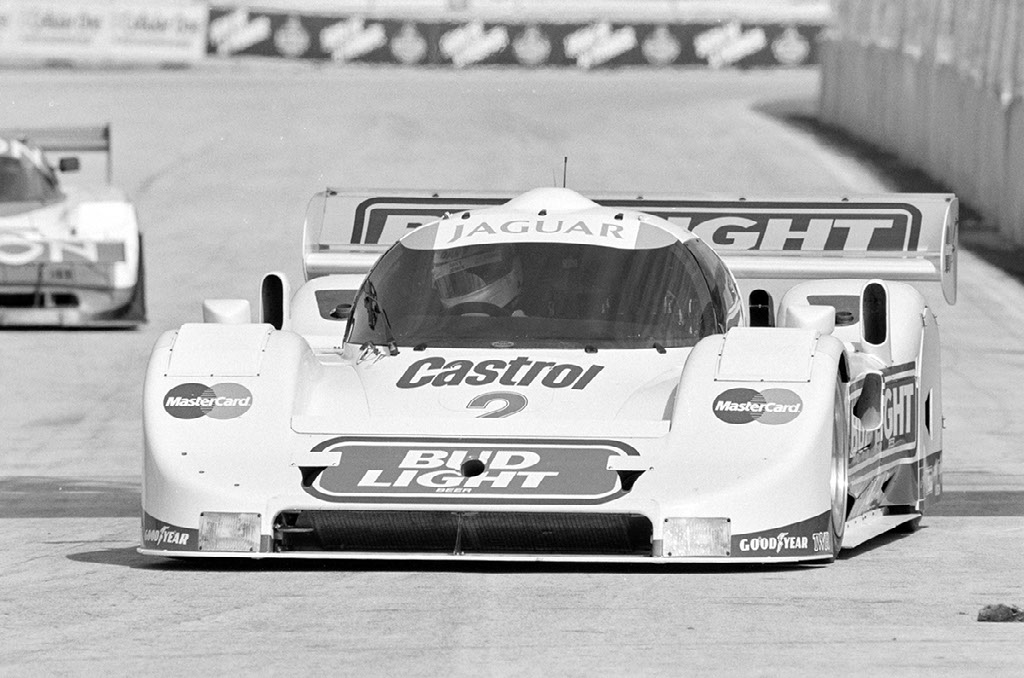IMSA A brief Look at the International Motor Sports Association
For any race car enthusiast it’s generally situation-normal for he or she to be interested in the great cars recalled from youth. In my case it’s the great cars of the 1940s and ’50s which are my earliest recollection, and the great cars of the early 1960s which really tug my interest-string.
I grew up within the motor racing world as the youngest member of a group of real die-hard racing writers and photographers. Older than myself their particular great-car buttons had been punched by the racing they had seen or first been attracted to during the 1930s, or even the 1920s. Working in more recent years with guys much younger than myself it has been perfectly right and proper to find that they are absolutely fascinated by the great-cars of the 1970s, 1980s or 1990s…and it is all related to their age and the period in which they first became entranced by this most majestic of competitive gasoline sports.
Now facets of almost every race fan’s interest are reflected in the 400,000-plus images currently preserved and presented within the Revs Digital Library. I might be regarded as somewhat peculiar, but while I certainly adore the great cars of my youth, I am just kid crazy about race cars from any period, whether it’s a car that used in competition during the 1890s, or the 1920s, the 1950s, 1980s or 1990s…and so on right up to date.
With the Digital Library there is tremendous representation from an entire century of motor sport, and most recently I have been rummaging about in IMSA racing coverage from the early 1990s, the kind of cars which might have twanged the interest of my children.
IMSA was, of course, the International Motor Sports Association, founded by Sikorsky employee John Bishop who had become responsible for defining technical rules and general administration of SCCA competition. He became a very well known and popular figure, featured in the SCCA’s eventual embrace of professional racings – as opposed to its strictly amateur roots – and he was motive power behind the introduction of the United States Road Racing Championship, TransAm and CanAm.
In 1969 Bishop left SCCA and joined Bill France Sr of NASCAR fame in creating IMSA – initially running Formula Vee and Formula Ford races at Pocono Raceway. The new venture did not prosper, France opted out and Bishop turned instead to running races for International-standard GT cars within the USA. This kind of racing took off, and in 1989 John Bishop – in ailing health – sold IMSA into other hands.
Watkins Glen Formula Vee 1968
Photo - David Nadig
Scanning through the Digital Library’s 1991 IMSA racing photography, it has been fascinating to see such evocative shots as the No 83 Geoff Brabham/Derek Daly/Gary Brabham Nissan NPT-90 on its way to winning the Sebring 12-Hour classic. Don Devendorf’s Nissan Performance Technology (NPT) team proved supremely effective, and the Australian Brabham boys – sons of three-times Formula 1 World Champion Jack Brabham proved that talent is in the genes.
Number 83 - race winners Geoff Brabham/Derek Daly/Gary Brabham's Nissan Performance-entered Nissan NPT-90.
Number 83 - race winners Geoff Brabham/Derek Daly/Gary Brabham's Nissan Performance-entered Nissan NPT-90.
The big gorilla in the room that Nissan overturned was Porsche with its 962C cars, such as the No 6 Reinhold Joest Racing entry which Bob Wollek/Bernd Schneider/Massimo Sigala drove into third place there.
The British Spice Engineering company was the premier constructor of competitive Group C and IMSA sports cars during the 1980s-early ’90s, and constructor/driver Gordon Spice himself won four consecutive World Drivers’ Championship titles. Gordon Spice became a true constructor in 1986 when he was contracted by General Motors to produce two new Camel ‘Lights’ honeycomb chassis to use their 350bhp 3-litre 4-cylinder Pontiac ‘Super Duty lookalike’ race engine. Pontiac Motorsports dictated the bodyshape to resemble the Fiero production car, so it became known as the ‘Spice Pontiac Fiero’.
Spice Engineering had a wonderful run but with the worldwide economic downturn into 1991 the concern entered voluntary liquidation – no stranger to motor racing endeavour throughout history.
Miami race winner that day in April 1991 was the Brazilian driver Raul Boesel in the No 3 Bud Light/Jaguar Racing team’s Jaguar XJR-10. These Tom Walkinshaw-built Jaguars were wonderful successors to the legendary heritage of the Le Mans C-Type and D-Type cars and the team’s XJR-9 and XJR-12 Le Mans winners of 1988 and 1990. The XJR-10 was the IMSA GTP design of 1989-90 using a completely new composite chassis with 3-litre V6 twin-turbocharged engine. During this 1991 season the British cars would win here at Miami and at West Palm Beach, and with the later XJR-16 at Road Atlanta, Mid-Ohio, Laguna Seca and Road America.

A real window into a very American – yet highly-International – form of endurance racing, the Revs Digital Library preserves and makes available most evocative images of a younger generation’s favourite race cars…